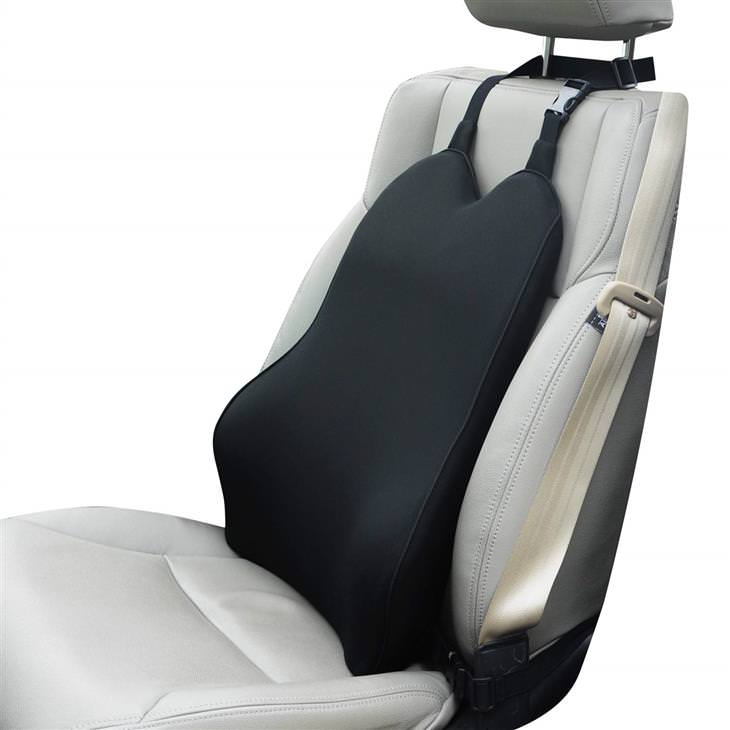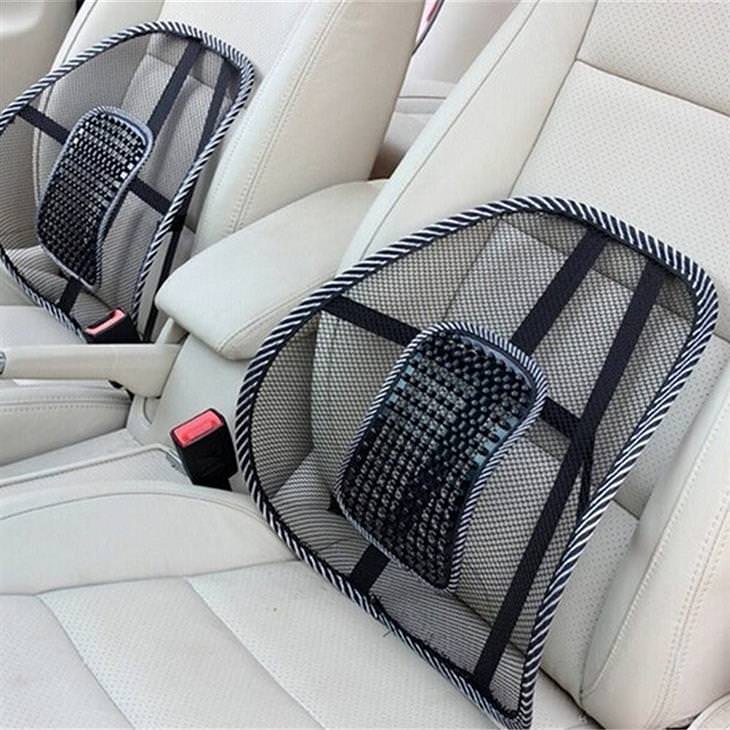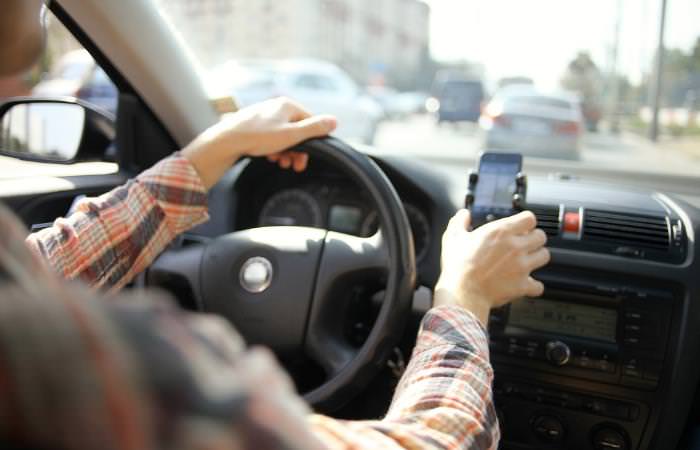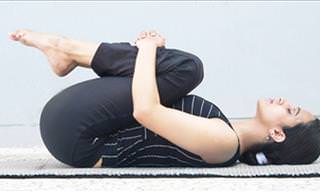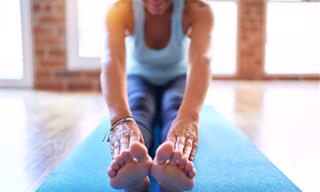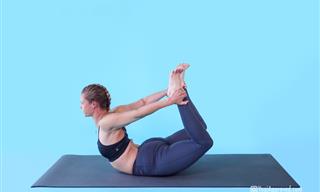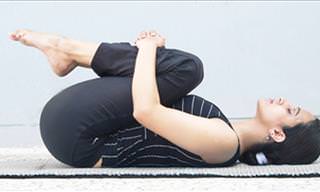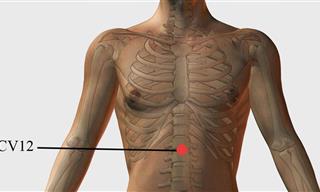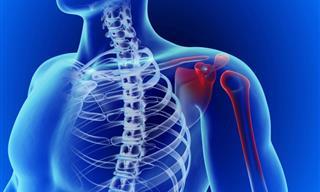The importance of comfort in your driver's seat is imperative to a healthy lifestyle. Not all cars are made with ergonomics in mind, and this faulty design could lead to lower and upper back pain, stiff neck, and even sore limbs. Sitting still in a car is different from sitting at a work desk or table at home. When you're driving, your feet are not flat against the ground to support your body. Body injuries caused by bad driving posture are so common they even got their own name - Repetitive Driving Injury.
Remember that there are measures you can take to improve your experience and prevent pain and muscle soreness. Every driver has different ergonomic needs that depend on their size, height, and regular mileage, but there are some universal rules as well. In general, you'll want to adjust the seat height and angle, backrest angle, lumbar support, and steering wheel for ultimate comfort.
Here are some guidelines on how to do that, tips for good driving habits and posture, and a few exercises you can do to stay healthy and safe while driving.
Seat Adjustments
Seat height should be adjusted so that your hips and knees are at the same height. Your knees can be slightly lower than your hips. The seat itself should be parallel to the floor. This is contrary to the widely used design of a slight angle upwards. This angle was originally designed to prevent you from sliding forward when you brake, but we have seat belts do that now. This angle puts strain on your lower back and hips.
If you can't change the angles, try purchasing a flat cushion to raise your hips so that they are in line with your knees.
Once this posture is correct, it will open your hips and increase blood circulation to the lower back to prevent pain.
Regarding the distance from the steering wheel, use this thumb rule for safety: there should be a minimum of 10 to 12 inches between you and the steering wheel. Once you made sure to keep that distance, you can move on to other adjustments: sit close enough to the pedals so you can press them all the way down with your feet while your heels remain on the ground.
Next, make sure there's a slight gap of about two fingers between the back of your knee and the seat. This will ensure proper circulation. Your knees should be slightly bent and your thighs should be fully supported by the seat.
Backrest Adjustments
The backrest should recline to an angle of 100-110 degrees. This helps reduce disc pressure on your spine and lower back. To further prevent back pain, set your lumbar support (if possible) so that it matches the curve of the small of your back perfectly. If your car does not have adjustable lumbar support, opt for a rolled towel as a temporary measure until you purchase a lumbar support cushion. Those come in many sizes and angles, featuring memory foam or mesh fabric for optimal ventilation.
The lowest edge of the support should be placed at your belt line or the top of the pelvis. Now check: when stationary, you should be able to sit with your shoulder blades pressed back into the chair while having a comfortable reach to the steering wheel, with an angle of 120 degrees in your elbows. You should NOT have to straighten your arm all the way to reach different operation handles in your car, like the driver in the image above. This picture is an example of a bad driving posture. Here are two examples of portable lumbar support cushions:
Lumbar Support with Upper Back Support
Mesh Lumbar Support with Massage Beads
Headrest and Steering Wheel Adjustments
Set the top of the headrest between the top of your ears and the top of your head. It should meet but not touch the back of your head when it is in the correct posture. Meaning, the earlobe is over the collar bone, and the chin is a bit up. This should feel like your head is resting precisely on the top of your spine, and not tilted forward. Once you lift your chin a little so your eyes look straight ahead, you'll also notice it is easier to breathe, as the throat is fully open and rested and the tongue is in the right position.
Lower the steering wheel. If possible, position it closer to you to relieve strain on the neck, shoulders, and upper back. Make sure that you still have a clear view of the dials and dashboard. Try holding the steering wheel at 9 and 3 o'clock instead of the classic driving lesson suggestion of 10 and 2 o'clock. This will take away some of the strain off your shoulders. Drivers with severe shoulder pain may opt for an even lower hold of the steering wheel. Most importantly, try to avoid resting your hands on the top of the wheel. This causes an imbalance of pressure on your shoulders, neck, and upper back.
Seatbelt Positioning
This is something you want to pay special attention to since incorrect seatbelt positioning can cause more harm than good. Ensure the lap portion of your seatbelt goes across the pelvis and NOT across your abdomen. The upper portion of the belt should go across your sternum and NOT the neck or shoulder. Try and diminish contact with soft tissues that can be harmed during an accident. When buckling yourself in, pull the seatbelt with the hand that is far from it to avoid straining your shoulder every time you get inside the car.
General Tips
- Immediately after you're done with posture corrections, adjust your mirrors. This will be your benchmark for good posture. If you suddenly notice you no longer have optimal visibility, fix your posture in accordance with the mirrors.
- Opt for a break of at least 15 minutes after every 2 hours of driving.
- Empty your back pockets before getting in the car - a heavy load in one pocket can cause an imbalance in your hips.
- After a long drive, take a 5-minute break to restore proper blood circulation before carrying heavy bags from the trunk.
- No matter how good your posture is, sitting still is against our nature. Make sure to slightly adjust your posture every 30 minutes to ensure that the pressure on the spine is varied.
- Place your left foot on the footrest instead of on the floor between clutch use or for the entire ride if your car has an automatic transmission.
Exercises You Can Do While in the Car
These are good for when you're parked, during a red light, or in minimal speed traffic. Remember to keep breathing through all exercises, and most importantly, prioritize safety.
- Shrug your shoulders up and down. Roll them back into the seat, then forward.
-
Tilt your head to each side.
-
Interlock your fingers with the palms out, stretch forward and hold.
-
When your feet are off the pedals, bend your knees so your feet are flat on the floor. Then push on the balls of the feet until the heels rise.
-
In your refreshment breaks, try some full-body stretches, lunges, and squats.
Things to Pay Attention to When Choosing Your Next Car:
- If you can afford it, prefer cars with built-in adjustable lumbar support.
- If entering and exiting the car is a difficult task for you, consider a car with a higher seat.
- Tall drivers might benefit from deeper seats.
- If you share a car with other drivers, pick one that has seat memory functions to save time.
 Go to BabaMail
Go to BabaMail




